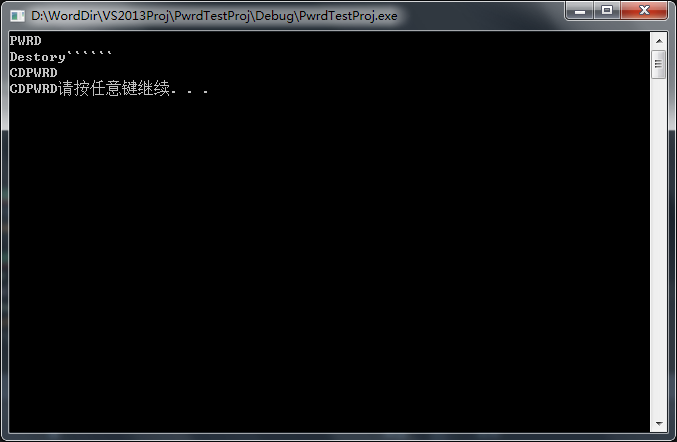#include "stdafx.h"
#include <stdlib.h>
#include <string.h>
// deleteд№ӢеҗҺе°ҶжҢҮй’ҲзҪ®дёәNULLйҳІжӯўз©әжҢҮй’Ҳ
#define SAFE_DELETE(p) do{ if(p){delete(p); (p)=NULL;} }while(false);
class String
{
public:
// жҷ®йҖҡжһ„йҖ еҮҪж•°
String(const char *str = NULL);
// жӢ·иҙқжһ„йҖ еҮҪж•°
String(const String &other);
// иөӢеҖјеҮҪж•°(йҮҚиҪҪж“ҚдҪңз¬Ұ=)
String & operator = (const String &other);
// жһҗжһ„еҮҪж•°
~String();
void printValue(){ printf("%s", m_pcData); };
private:
// дҝқеӯҳеӯ—з¬ҰдёІзҡ„жҢҮй’Ҳ
char* m_pcData;
};
String::String(const char *str)
{
if (str == NULL)
{
m_pcData = new char[1];
m_pcData = "�";
}
else
{
// strlen(str)жҳҜи®Ўз®—еӯ—з¬ҰдёІзҡ„й•ҝеәҰпјҢдёҚеҢ…жӢ¬еӯ—з¬ҰдёІжң«е°ҫзҡ„вҖң�вҖқ
size_t len = strlen(str) + 1;
m_pcData = new char[len];
strcpy_s(m_pcData, len, str);
}
}
String::String(const String& other)
{
if (other.m_pcData == NULL)
{
m_pcData = "�";
}
else
{
int len = strlen(other.m_pcData) + 1;
m_pcData = new char[len];
strcpy_s(m_pcData, len, other.m_pcData);
}
}
String& String::operator = (const String &other)
{
// еҰӮжһңжҳҜиҮӘиә«е°ұзӣҙжҺҘиҝ”еӣһдәҶ
if (this == &other)
return *this;
// еҲӨж–ӯеҜ№иұЎйҮҢйқўзҡ„еҖјжҳҜеҗҰдёәз©ә
if (other.m_pcData == NULL)
{
delete m_pcData;
m_pcData = "�";
return *this;
}
else
{
// еҲ йҷӨеҺҹжңүж•°жҚ®
delete m_pcData;
int len = strlen(other.m_pcData) + 1;
m_pcData = new char[len];
strcpy_s(m_pcData, len, other.m_pcData);
return *this;
}
}
String::~String()
{
SAFE_DELETE(m_pcData);
printf("
Destory``````");
}
int main()
{
// и°ғз”Ёжҷ®йҖҡжһ„йҖ еҮҪж•°
String* str = new String("PWRD");
str->printValue();
delete str;
// и°ғз”ЁиөӢеҖјеҮҪж•°
String newStr = "CDPWRD";
printf("
%s
", newStr);
String copyStr = String(newStr);
copyStr.printValue();
system("pause");
return 0;
}
и°ғиҜ•з»“жһңпјҡ


